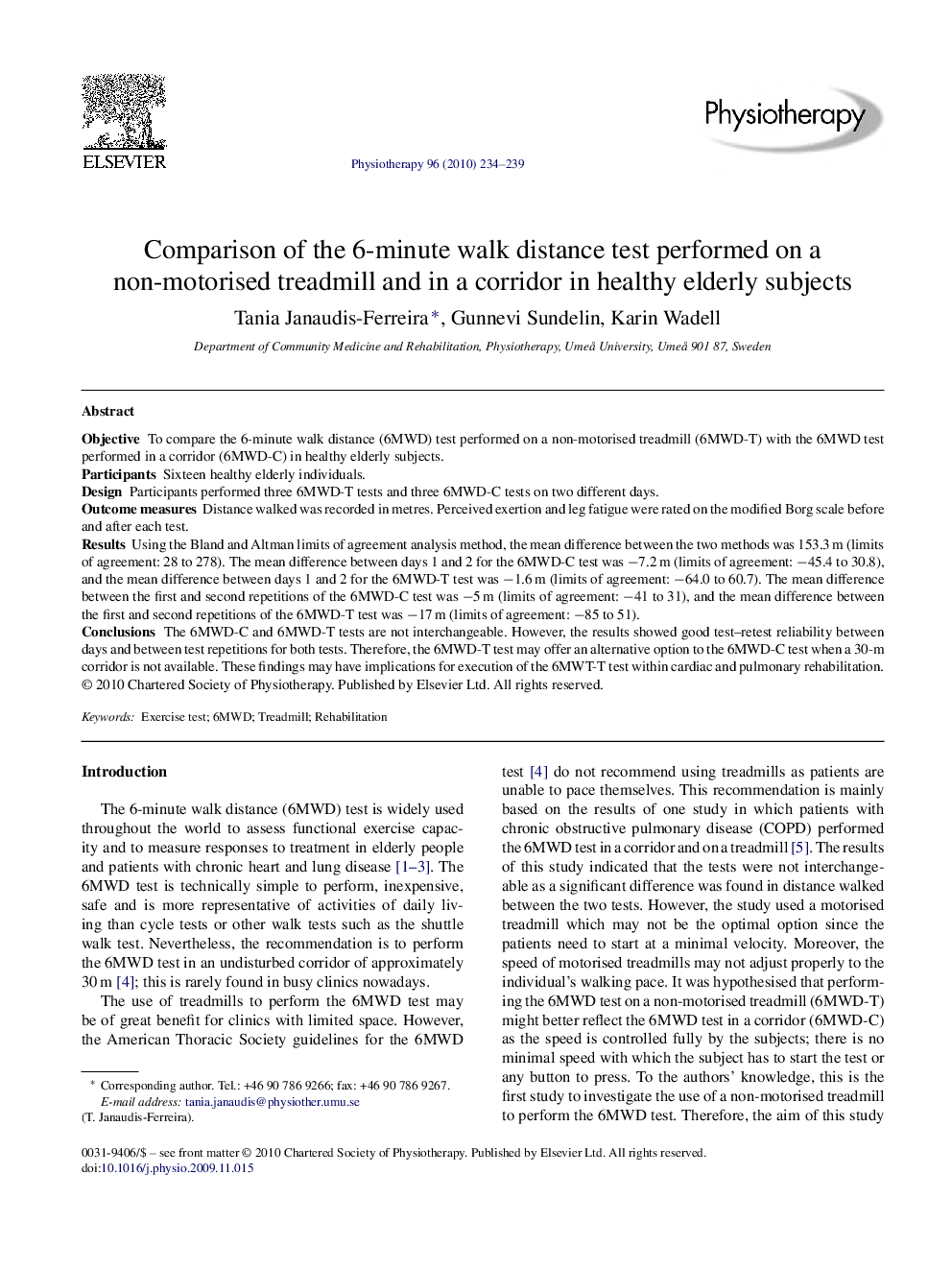| Article ID | Journal | Published Year | Pages | File Type |
|---|---|---|---|---|
| 2627230 | Physiotherapy | 2010 | 6 Pages |
ObjectiveTo compare the 6-minute walk distance (6MWD) test performed on a non-motorised treadmill (6MWD-T) with the 6MWD test performed in a corridor (6MWD-C) in healthy elderly subjects.ParticipantsSixteen healthy elderly individuals.DesignParticipants performed three 6MWD-T tests and three 6MWD-C tests on two different days.Outcome measuresDistance walked was recorded in metres. Perceived exertion and leg fatigue were rated on the modified Borg scale before and after each test.ResultsUsing the Bland and Altman limits of agreement analysis method, the mean difference between the two methods was 153.3 m (limits of agreement: 28 to 278). The mean difference between days 1 and 2 for the 6MWD-C test was −7.2 m (limits of agreement: −45.4 to 30.8), and the mean difference between days 1 and 2 for the 6MWD-T test was −1.6 m (limits of agreement: −64.0 to 60.7). The mean difference between the first and second repetitions of the 6MWD-C test was −5 m (limits of agreement: −41 to 31), and the mean difference between the first and second repetitions of the 6MWD-T test was −17 m (limits of agreement: −85 to 51).ConclusionsThe 6MWD-C and 6MWD-T tests are not interchangeable. However, the results showed good test–retest reliability between days and between test repetitions for both tests. Therefore, the 6MWD-T test may offer an alternative option to the 6MWD-C test when a 30-m corridor is not available. These findings may have implications for execution of the 6MWT-T test within cardiac and pulmonary rehabilitation.
